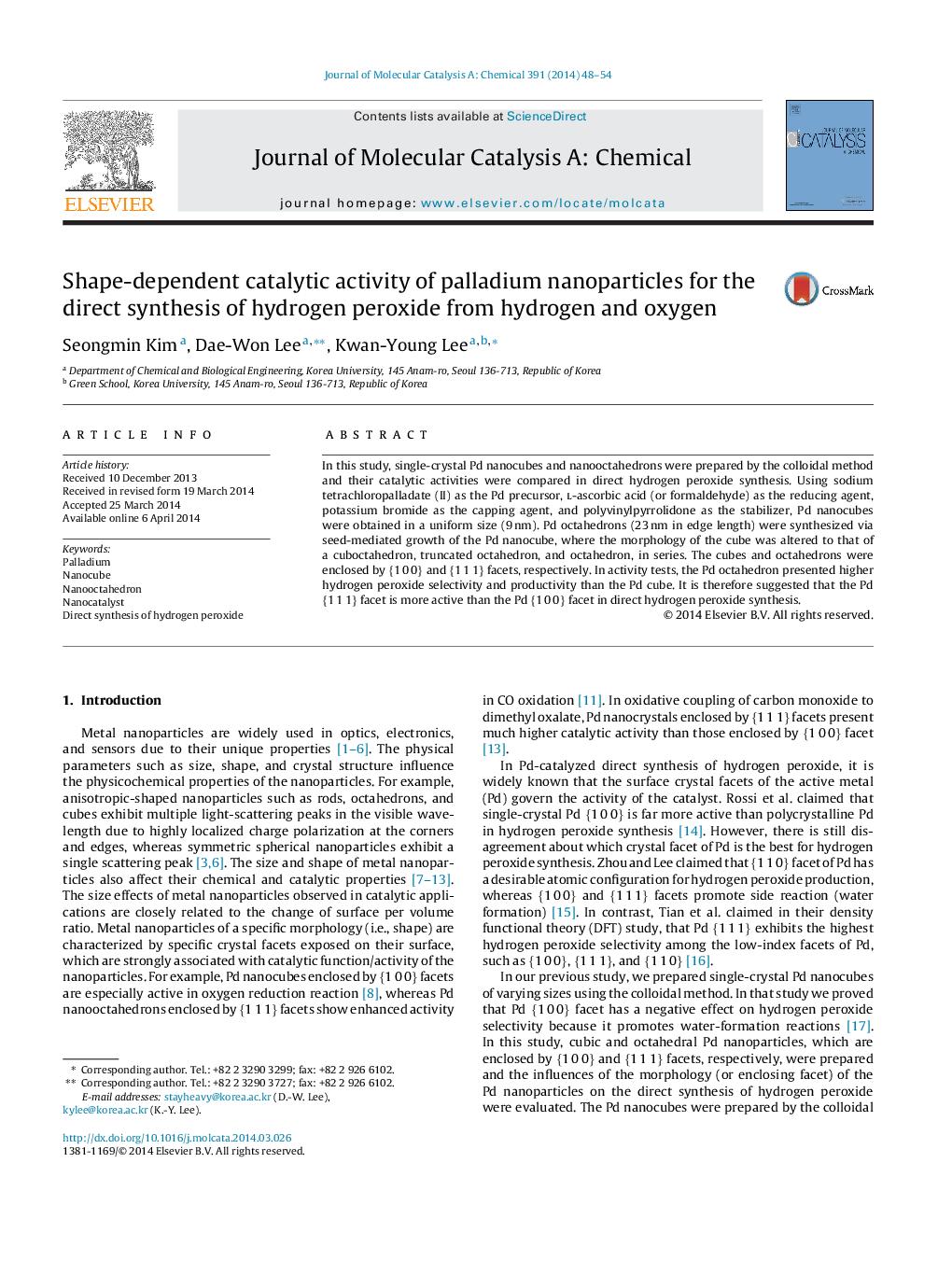| Article ID | Journal | Published Year | Pages | File Type |
|---|---|---|---|---|
| 65106 | Journal of Molecular Catalysis A: Chemical | 2014 | 7 Pages |
•{1 0 0} facet enclosed nanocubes (9 nm) were used as seeds for octahedron synthesis.•Pd octahedrons were enclosed by {1 1 1} facet and had 23 nm in edge length.•Pd {1 1 1} facet showed better activity than Pd {1 0 0} facet for the H2O2 synthesis.
In this study, single-crystal Pd nanocubes and nanooctahedrons were prepared by the colloidal method and their catalytic activities were compared in direct hydrogen peroxide synthesis. Using sodium tetrachloropalladate (II) as the Pd precursor, l-ascorbic acid (or formaldehyde) as the reducing agent, potassium bromide as the capping agent, and polyvinylpyrrolidone as the stabilizer, Pd nanocubes were obtained in a uniform size (9 nm). Pd octahedrons (23 nm in edge length) were synthesized via seed-mediated growth of the Pd nanocube, where the morphology of the cube was altered to that of a cuboctahedron, truncated octahedron, and octahedron, in series. The cubes and octahedrons were enclosed by {1 0 0} and {1 1 1} facets, respectively. In activity tests, the Pd octahedron presented higher hydrogen peroxide selectivity and productivity than the Pd cube. It is therefore suggested that the Pd {1 1 1} facet is more active than the Pd {1 0 0} facet in direct hydrogen peroxide synthesis.
Graphical abstractFigure optionsDownload full-size imageDownload high-quality image (109 K)Download as PowerPoint slide
